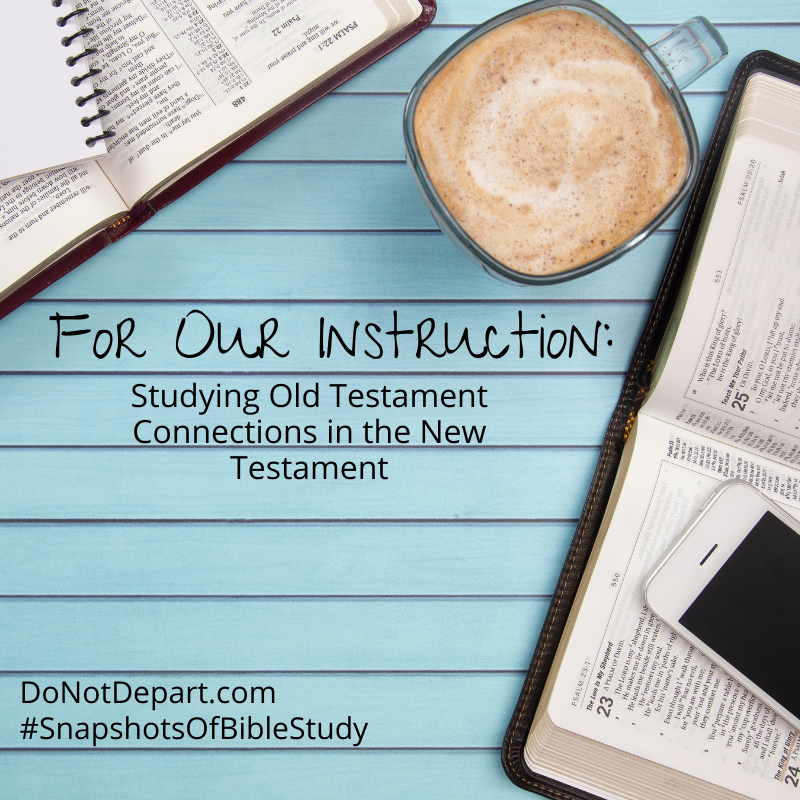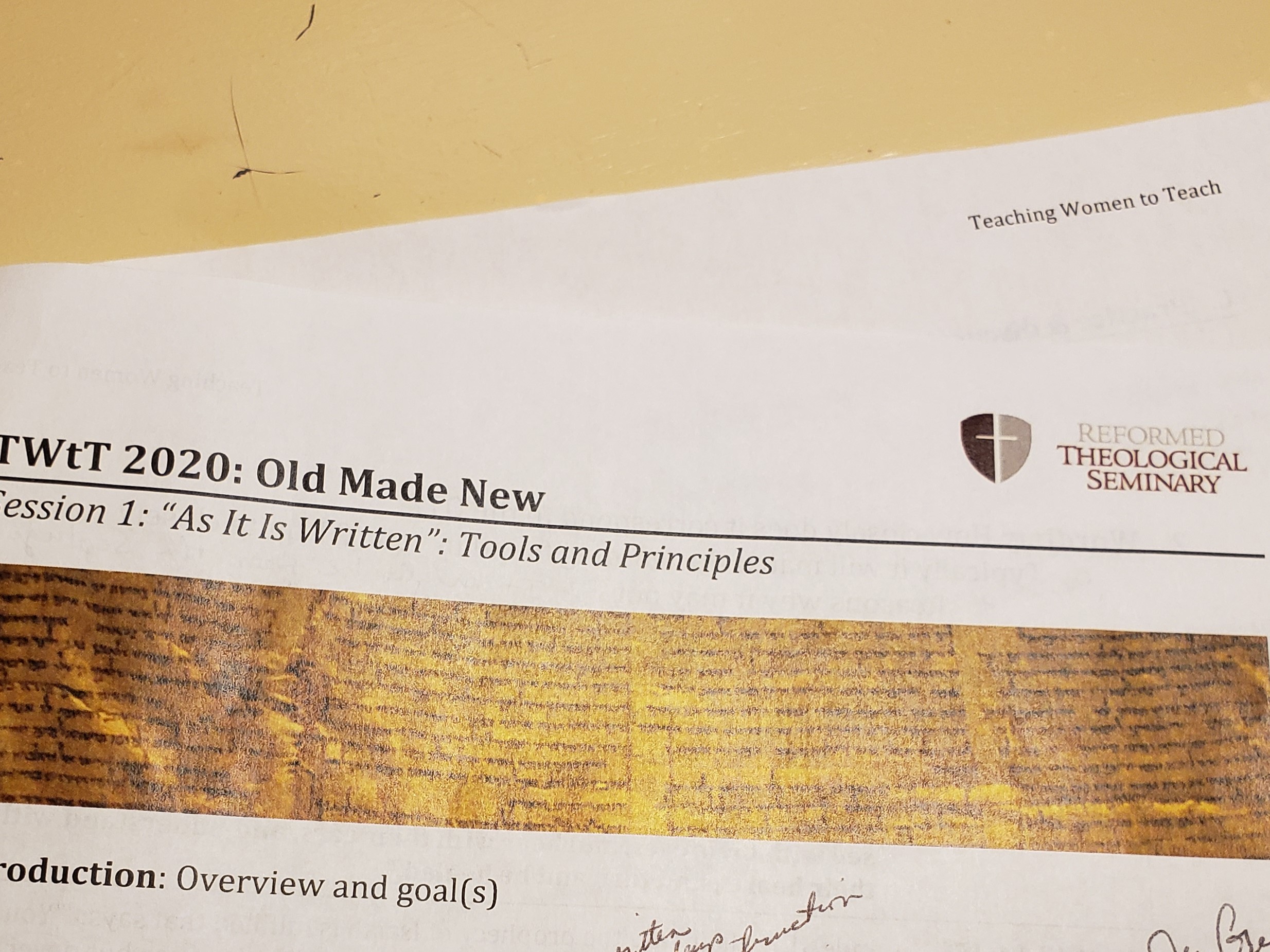From little on up, I was taught the importance of the whole biblical narrative, Genesis to Revelation. Even now, making connections between the Old Testament and New Testament inspires greater faith and deeper study. The Apostle Paul writes,
For whatever was written in former days was written for our instruction, that through endurance and through the encouragement of the Scriptures we might have hope. Romans 15:4
With this verse as inspiration, I am sharing tips for taking a “deep dive” into the New Testament. Particularly, we will learn how to study New Testament passages with Old Testament connections.
Prior to the Covid 19 pandemic, I participated in a workshop taught by Dr. Greg Lanier, Associate Professor of the New Testament at Reformed Theological Seminary in Orlando, Florida. Specifically, the workshop focused on using the Old Testament to understand the New Testament. If you live near a seminary or Bible college offering layperson seminars or workshops, I highly recommend participating. What follows is what I learned, in my own words.
Identify the Source
When you come across an Old Testament connection in the New Testament it will take one of three forms: citation, quotation, or allusion.
- Citation: The Old Testament is quoted verbatim, or nearly so, and preceded by an introductory formula (i.e., “It is written,” “It is fulfilled,” “The prophet [insert prophet name] said,”). The citation appeals to an authority, or provides proof of an Old Testament connection.
- Quotation: The Old Testament is quoted verbatim, or nearly so, and does not have an introductory formula. The quotation is a link to Old Testament significance.
- Allusion: A brief reference, not verbatim, to the Old Testament, creating an “aha” moment for the attuned student.
To summarize, like a flashing neon sign, the citation is there to say this is a “must see” or “must study” Old Testament connection. As important, the quotation is a signal that the Old Testament context is significant. The allusions are more difficult to find, but they demonstrate how God weaves even the smallest details throughout His Word from Genesis to Revelation.
Contextualize the Source
Having identified the Old Testament source, contextualize it. Start by locating and reading the Old Testament passage, not just the verses cited or quoted, but at least the entire chapter. Extend your study by researching the historical and spiritual context of the nation of Israel at the time of the Old Testament passage. Consider what the original message communicated to its audience. Understanding the context of the Old Testament citation, quotation, or allusion, prepares you to uncover the full meaning of its use in the New Testament.
Synthesize What You Learned
Now, go back to the New Testament passage. Re-read the passage with your new insight from the Old Testament as a guide. Discover the theme of the passage. Uncover how the use of the Old Testament promotes the New Testament theme. You will likely note some patterns the more you engage in this type of study. Four common patterns are:
- Prophecy: The Old Testament predicted X, and X came true in the New Testament. Read Acts 3:20-22.
- Pre-figuring: An Old Testament person or thing is a picture of a future ultimate fulfillment. Read John 3:14.
- Pattern: History repeats itself. Read Acts 7:51-52.
- Prescription: Instruction on doctrine. Read Romans 13:9
As you move through your study you will see how the Old Testament illuminates the New Testament and how the New Testament illuminates the Old Testament.
Practice
Using Luke 19:45-46, I have provided an example of what it looks like when you follow the tips I am sharing today. I have also provided a blank sheet for you to use for future study. Click this link to get the PDF copies: Studying Old Testament Connections in the New Testament. May “the grace of the Lord Jesus Christ and the love of God and the fellowship of the Holy Spirit be with you all” (2 Corinthians 13:14).





Join the Discussion